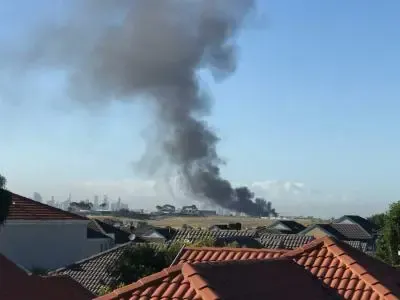Was the Missing Plane Crash in Australia Truly Unsurvivable?

Synopsis
Key Takeaways
- Wreckage located in Snowy Mountains
- 74-year-old pilot identified
- Search faced challenging weather
- Multi-agency response was initiated
- Crash deemed unsurvivable by authorities
Sydney, July 18 (NationPress) Authorities have located the wreckage of a plane that went missing in eastern Australia, labeling the incident as unsurvivable.
A search operation commenced on Tuesday when the light aircraft, piloted by 74-year-old David Stephens, did not arrive at its intended destination at a regional airport situated south of Sydney in New South Wales (NSW).
On Friday, NSW Police confirmed that the wreckage of the aircraft, a single-engine 1966 Beechcraft Debonair 35-C33, was discovered by a rescue helicopter around 4 PM on Thursday in the Snowy Mountains region, according to the Xinhua news agency.
Superintendent Andrew Spliet informed the media that the plane had been utterly obliterated in the crash, stating, "It is fairly clear it wouldn't be survivable."
On July 17, an emergency search was initiated for the light aircraft that failed to arrive at its destination in eastern Australia.
A multi-agency search operation for the missing aircraft began on Wednesday and resumed on Thursday morning, as reported by the Australian Broadcasting Corporation (ABC).
The Australian Maritime Safety Authority (AMSA) noted in a statement that the plane had taken off from Wangaratta, located 340 km west of Moruya in Victoria, with its last known position being in NSW's Snowy Mountains near Khancoban, roughly halfway along its route.
Search efforts included a jet and helicopters surveying the area from above, although weather conditions were unfavorable, marked by low clouds and restricted visibility.
NSW Police, the State Emergency Service, the National Parks and Wildlife Service, along with personnel from a local hydroelectric facility, were actively engaged in ground searches.
Forecasted weather for Khancoban on Thursday included snow showers and temperatures dropping to as low as one degree Celsius.









